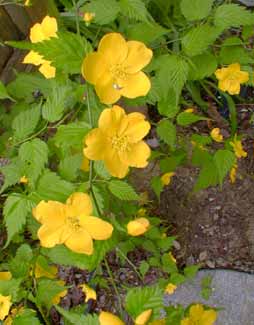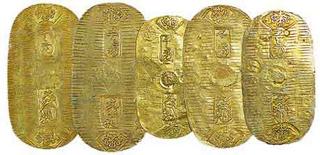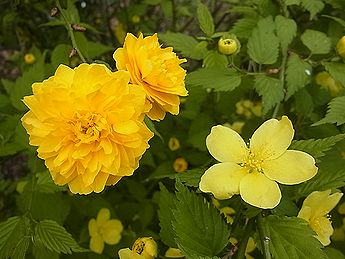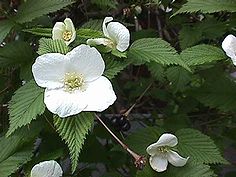:::::::::::::::::::::::::::::::::::::::::::::::::::::::::::::::::::::::::::::::::::::::::::::::::::::
Leather haori jacket (kawabaori)
***** Location: Japan
***** Season: All winter
***** Category: Humanity
*****************************
Explanation
kawabaori 皮羽織 (かわばおり) leather Haori coat
... kawabaori 革羽織(かわばおり)(kawa-baori)
fuyubaori, (fuyu haori) 冬羽織 (ふゆばおり) haori coat for winter
... awasebaori 袷羽織(あわせばおり)
... wata-irebaori 綿入羽織(わたいればおり)haori with cotton padding
chabaori 茶羽織(ちゃばおり)"tea haori coat" for ladies
(also called 半反羽織, since is is rather short)
kawagoromo 皮衣(かわごろも)clothing from leather
... kawagoromo 裘(かわごろも), kawaginu かわぎぬ
kawa tebukuro 皮手袋 leather gloves
. Warm things in Winter .
.......................................................................
haori 羽織 Haori coat, Haori jacket,
Japanese-style half coat
Japanese Haori Coat, Haori Kimono Jacket

Haori is a lightweight coat worn over kimono. It does not close in front, so it can be used as a jacket.
:::::::::::::::::::::::::::::::::::::::::::::::::::::::::::::::::::::::::::::::::::::::::::::::::::::

source : www.toraichi-shop.com
made from sheep skin
During the Edo period, they were used by the Daimyo and his men on horseback.
The firebrigade of Edo also used them for their protection.

source : onihei.cocolog-nifty.com
Different patterns for the fire brigade of Edo.
:::::::::::::::::::::::::::::::::::::::::::::::::::::::::::::::::::::::::::::::::::::::::::::::::::::
kaji shoozoku 火事装束 protective cloths for the firebrigade
kaji zukin 火事頭巾 protective hood for fire
. WKD : Fire in Edo.
:::::::::::::::::::::::::::::::::::::::::::::::::::::::::::::::::::::::::::::::::::::::::::::::::::::
. ABC List of Edo craftsmen 江戸の職人 .

source : ニュース和歌山2014年
A store that sells many things, among them Haori coats, in Wakayama around 1757.
haoriya 羽織屋 making Haori coats
紋羽織屋 / 紋付羽織屋 making Haori with a family crest
. kamon 家紋 family crest .
. kappaya 合羽屋 making raincoats .
*****************************
Worldwide use
Leder-Haori-Jacke
*****************************
Things found on the way
Leather Goods 皮細工 kawazaiku
. Daruma and Leather Goods .
:::::::::::::::::::::::::::::::::::::::::::::::::::::::::::::::::::::::::::::::::::::::::::::::::::::
Samurai Leather
For over 600 years Himeji has been famous for it’s traditional white leather processing. The soft, supple, white leather was once used to cover samurai armor, parts of helmets and the edging of various armor parts too. The same white leather was used to make gloves for archers and swordsmen, tabi socks for the affluent, and strong bags carried by wandering swordsmen.
Today, the traditional leatherworks are used for bags, wallets and purses.
My new wallet (seen here, sitting on a sheet of hand processed deerskin) is hand made by the traditional leather workers, and features the crests of the various lords of Himeji Castle, Hashiba, (Toyotomi), Kuroda, Honda, Sakai, Ikeda, Sakakibara, and Matsudaira.
- source : SamuraiHistory - facebook
:::::::::::::::::::::::::::::::::::::::::::::::::::::::::::::::::::::::::::::::::::::::::::::::::::::::
torenchikooto トレンチコート trenchcoat, trench coat
トレンチコートいつも椅子から落つるなり
torenchikooto itsumo isu kara otsuru nari
my trenchcoat
always slips
from the chair . . .
Katoo Kanabun 加藤かな文 Kato Kanabun (1961 - )
The cut marker NARI is at the end of line 3.
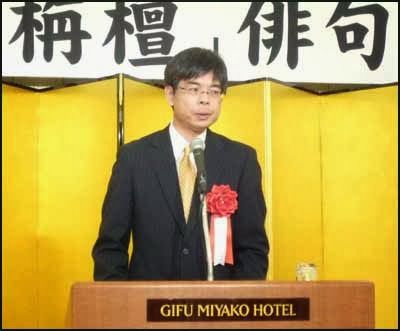
*****************************
HAIKU
haiku by Kobayashi Issa
皮羽織見せに行也としの市
kawa-baori mise ni yuku nari toshi no ichi
showing off
his long leather jacket
at the New Year's market
Toshi means the coming new year. Special, temporary New Year's markets selling decorations, calendars, presents, and other items at low prices for use at New Year's were set up in certain temples and shrines on 12/25-6 and almost everywhere from 12/27 until New Year's Eve, when everything was sold off at even lower bargain prices.
The subject who wears the haori jacket isn't given, but it seems more likely to be a person Issa sees than Issa himself. The nari indicates either
1) exclamation or strong emphasis or
2) supposition ("seems; is said to be").
Issa would probably use it for himself only if he were amazed at what he was doing and were looking at himself objectively, perhaps to make fun of himself, or, on the other hand, if he were strongly asserting that this is absolutely what he was doing. There seems to be amazement and exclamation in this hokku, but it appears to come from the fact that a style-conscious, comparatively young man is wearing a fairly unusual and attention-drawing Edo-style leather jacket in Issa's rural hometown and displaying himself rather than buying New Year's items.
The social context also suggests something similar. Leather haori (loose leather jackets hanging almost down to the knees, with the front left mostly open) were first worn for protection by firefighters, and then, a few decades before 1824, when this hokku was written, they became a symbol of advanced style among swaggering toughs and other fashion-following men who considered themselves dandies, though occasionally style-conscious women in Edo wore them, too. This fashion trend caused leather haori jackets and all other leather goods to become very expensive.
In spite of the high price and sophisticated designs on the leather haori jackets, they also had some of the same cultural meaning that black leather jackets had in middle and late 20th-c. US culture. Making a guess based on this historical context, the man in Issa's hokku probably isn't a Hell's Angel type, but he's likely to be comparatively young, and he's more interested in showing himself off as a man about town to the big crowd in the market than he is in getting ready for New Year's. Since he has enough money buy an expensive leather jacket, perhaps he's not even interested in buying the relatively cheap articles in the market at all.
In 1830, six years after this hokku was written, the government outlawed leather haori jackets and ordered commoners to wear cotton happi cloaks instead. Presumably the shogunate considered the use by commoners of large amounts of leather, a luxury good until then used mainly by the warrior class (with the exception of leather socks), to be blurring the class border between the warrior class and commoners. Also, the new Edo custom of wearing lots of leather led to competition between young toughs and sometimes to street violence.
At the time Issa wrote this hokku he was 62, so, without any other supporting evidence, it seems doubtful he was stepping out and trying to make an expensive fashion statement as an alpha male and declaring that his fashion is his main reason for going to the market. The other hokku in his diary about New Year's markets in this year also seem to be about other people, not Issa himself.
Chris Drake
.................................................................................
kawa haori mise ni yuku nari toshi no ichi
showing off
my leather coat...
year's end fair
Tr. David Lanoue

:::::::::::::::::::::::::::::::::::::::::::::::::::::::::::::::::::::::::::::::::::::::::::::::::::::
老骨をばさと包むや革羽織
rokotsu o basato tsutsumu ya kawabaori
my old bones
wrapped so snuggly -
this leather haori coat
. 芥川龍之介 Akutagawa Ryunosuke .
:::::::::::::::::::::::::::::::::::::::::::::::::::::::::::::::::::::::::::::::::::::::::::::::::::::
革羽織古めかしたる寒かな
kawabaori furumekashitaru samusa kana
my leather haori coat
is already so old -
this cold
. Natsume Soseki 夏目漱石 .
*****************************
Related words
. short, light summer coat 夏羽織 natsubaori .
- - - - - MATSUO BASHO - - - - -
別れ端や笠手に提げて夏羽織
. wakareba ya kasa te ni sagete natsu-baori .
time to say good bye -
the traveller's hat in my hand
and my summer coat on
Tr. Gabi Greve
Written about 1684 貞亨元年, Basho age 41 or later
Some explain this as Basho taking leave of his summer robe and friends at the same time. The season would then be early autumn.
It could also be the "change of robes" for summer robes on the first day of the fourth lunar month, thus a kigo for summer, and Basho would be taking leave of his warm winter coat, getting ready for a journey in summer.
- - - - - - - - - -
花に酔へり羽織着て刀さす女
hana ni yoeri haori kite katana sasu onna
drunk by cherry blossoms
a lady wearing a haori coat
and a sword
Tr. Gabi Greve
Written about 天和元年 , Basho 38 to 40.
At that time, ladies never wore haori coats or had a sword in the sash. That was samurai wear.
Maybe someone was using this a costume? When drunk with blossoms, all things seem possible.
The meaning is not quite clear.
- - - - - - - - - -
風薫る羽織は襟もつくろはず
. kaze kaoru haori wa eri mo tsukurohazu .
remembering Ishiyama Joozan 石山丈山 Jozan in Kyoto
- - - - - - - - - -
きてもみよ甚兵が羽織花衣
. kite mo miyo jinbe ga haori hanagoromo .
- - - - - - - - - -
別れ端や笠手に提げて夏羽織
. wakareba ya kasa te ni sagete natsu-baori .
time to say good bye -
the traveller's hat in my hand
and my summer coat on
Tr. Gabi Greve
Written about 1684 貞亨元年, Basho age 41 or later
Some explain this as Basho taking leave of his summer robe and friends at the same time. The season would then be early autumn.
It could also be the "change of robes" for summer robes on the first day of the fourth lunar month, thus a kigo for summer, and Basho would be taking leave of his warm winter coat, getting ready for a journey in summer.
. Matsuo Basho 松尾芭蕉 - Archives of the WKD .
:::::::::::::::::::::::::::::::::::::::::::::::::::::::::::::::::::::::::::::::::::::::::::::::::::::
***** . Warm Robes in Winter .
***** . toshi no ichi 年の市 last market of the Year .
..... kure no ichi 暮の市(くれのいち) Year-end market
..... kure ichi 暮市(くれいち)
shiwasu no ichi 師走の市(しわすのいち) December market
saimatsu oo-uridash 歳末大売出しYear-end sale
sekki ichi 節季市(せっきいち)seasonal market
inden 印伝, short for indengawa 印伝革
. Deerskin goods from Yamanashi .
:::::::::::::::::::::::::::::::::::::::::::::::::::::::::::::::::::::::::::::::::::::::::::::::::::::
[ . BACK to DARUMA MUSEUM TOP . ]
[ . BACK to WORLDKIGO . TOP . ]
:::::::::::::::::::::::::::::::::::::::::::::::::::::::::::::::::::::::::::::::::::::::::::::::::::::
